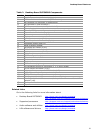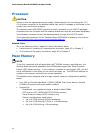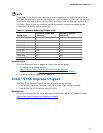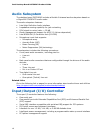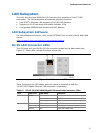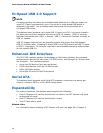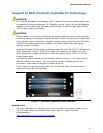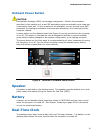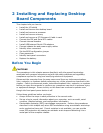Desktop Board Features
19
BIOS
The BIOS provides the Power-On Self-Test (POST), the BIOS Setup program, the PCI
and IDE auto-configuration utilities, and the video BIOS.
See Chapter 3 on page 59 for more information about the BIOS.
Serial ATA and IDE Auto Configuration
If you connect a Serial ATA or IDE device (such as a hard drive) to your desktop
board, the auto-configuration utility in the BIOS automatically detects and configures
the device for your computer. You do not need to run the BIOS Setup program after
installing a Serial ATA or IDE device. You can override the auto-configuration options
by specifying manual configuration in the BIOS Setup program.
When booting from a Serial ATA device, the device connected to Serial ATA connector
0 is the first boot device and the device connected to Serial ATA connector 3 is the last
boot device by default.
PCI and PCI Express* Auto Configuration
If you install a PCI/PCI Express add-in card in your desktop board, the PCI/PCI
Express auto-configuration utility in the BIOS automatically detects and configures the
resources (IRQs, DMA channels, and I/O space) for that add-in card. You do not need
to run the BIOS Setup program after you install a PCI/PCI Express add-in card.
Security Passwords
The BIOS includes security features that restrict whether the BIOS Setup program can
be accessed and who can boot the computer. A supervisor password and a user
password can be set for the BIOS Setup and for booting the computer, with the
following restrictions:
• The supervisor password gives unrestricted access to view and change all Setup
options. If only the supervisor password is set, pressing <Enter> at the password
prompt of Setup gives the user restricted access to Setup.
• If both the supervisor and user passwords are set, you must enter either the
supervisor password or the user password to access Setup. Setup options are then
available for viewing and changing depending on whether the supervisor or user
password was entered.
• Setting a user password restricts who can boot the computer. The password
prompt is displayed before the computer is booted. If only the supervisor
password is set, the computer boots without asking for a password. If both
passwords are set, you can enter either password to boot the computer.
Related Links:
For instructions on resetting the password, see Clearing Passwords on page 53.





